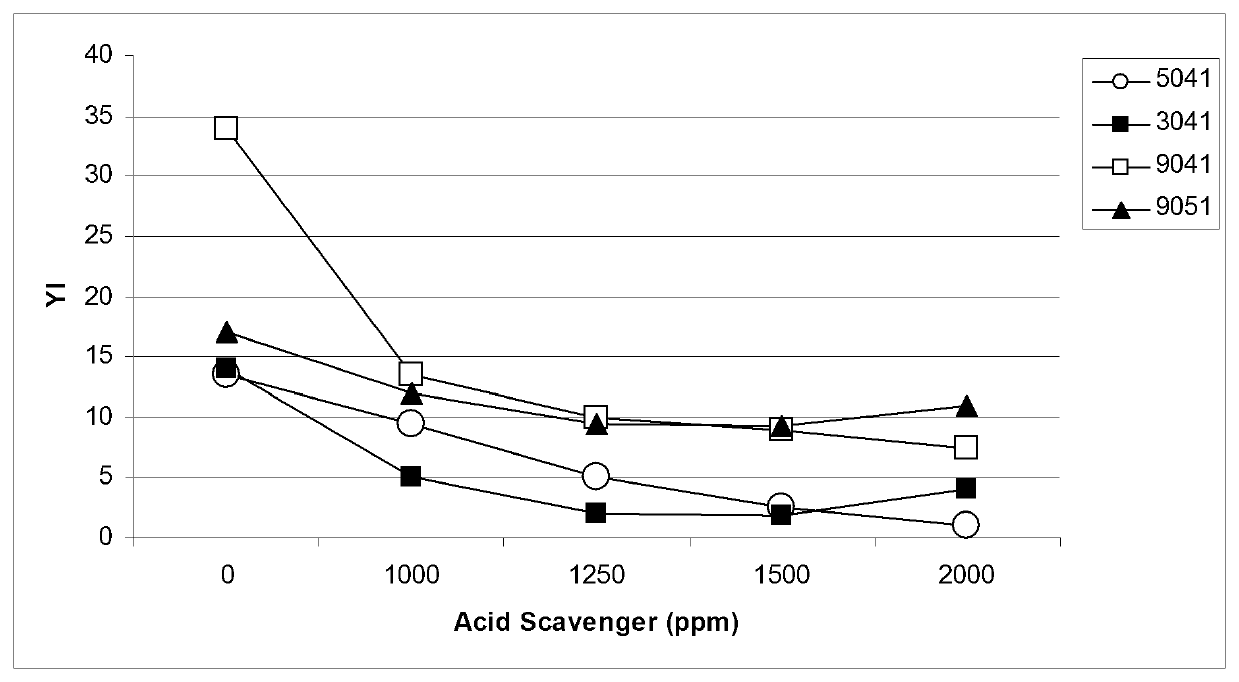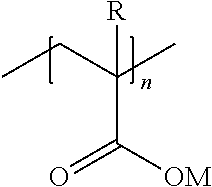Fluoropolymer composition
a fluoropolymer and composition technology, applied in the field of fluoropolymer composition, can solve the problems of thermal decomposition of ectfe, chain scission, and generation of volatile chain fragments, and achieve the effects of improving whiteness, less discoloration, and improving color
- Summary
- Abstract
- Description
- Claims
- Application Information
AI Technical Summary
Benefits of technology
Problems solved by technology
Method used
Image
Examples
examples
Raw Materials
[0095]The following ECTFE polymers were used:[0096]HALAR® 5041 ECTFE polymer, 50 / 50 molar ratio E / CTFE with melt flow rate of 15-22 g / 10 min, at 275° C. under a piston load of 2.16Kg;[0097]HALAR® 3041 ECTFE polymer, 50 / 50 molar ratio E / CTFE with melt flow rate of 1.5-3.0 g / 10 min, at 275° C. under a piston load of 2.16Kg[0098]HALAR® 9041 ECTFE polymer, 50 / 50 molar ratio E / CTFE with melt flow rate of 0.8-1.3 g / 10 min, at 275° C. under a piston load of 2.16Kg[0099]HALAR® 9051 ECTFE polymer, about 47 / 53 molar ratio E / CTFE with melt flow rate of 0.8-1.3 g / 10 min, at 275° C. under a piston load of 5 Kg all commercially available from Solvay Specialty Polymers.
[0100]The following polyelectrolytes (E) were used:[0101]RHODOLINE® 270 water soluble sodium polyacrylic acid salt, having Mw=3500 [polyelectrolyte (E1), hereinafter];[0102]CARBOSPERSE® K766 water soluble sodium polymethacrylic acid salt, having Mw=5000 [polyelectrolyte (E2), hereinafter].
[0103]The polyelectrolytes (E1)...
PUM
| Property | Measurement | Unit |
|---|---|---|
| Temperature | aaaaa | aaaaa |
| Fraction | aaaaa | aaaaa |
| Fraction | aaaaa | aaaaa |
Abstract
Description
Claims
Application Information
 Login to View More
Login to View More - R&D Engineer
- R&D Manager
- IP Professional
- Industry Leading Data Capabilities
- Powerful AI technology
- Patent DNA Extraction
Browse by: Latest US Patents, China's latest patents, Technical Efficacy Thesaurus, Application Domain, Technology Topic, Popular Technical Reports.
© 2024 PatSnap. All rights reserved.Legal|Privacy policy|Modern Slavery Act Transparency Statement|Sitemap|About US| Contact US: help@patsnap.com










